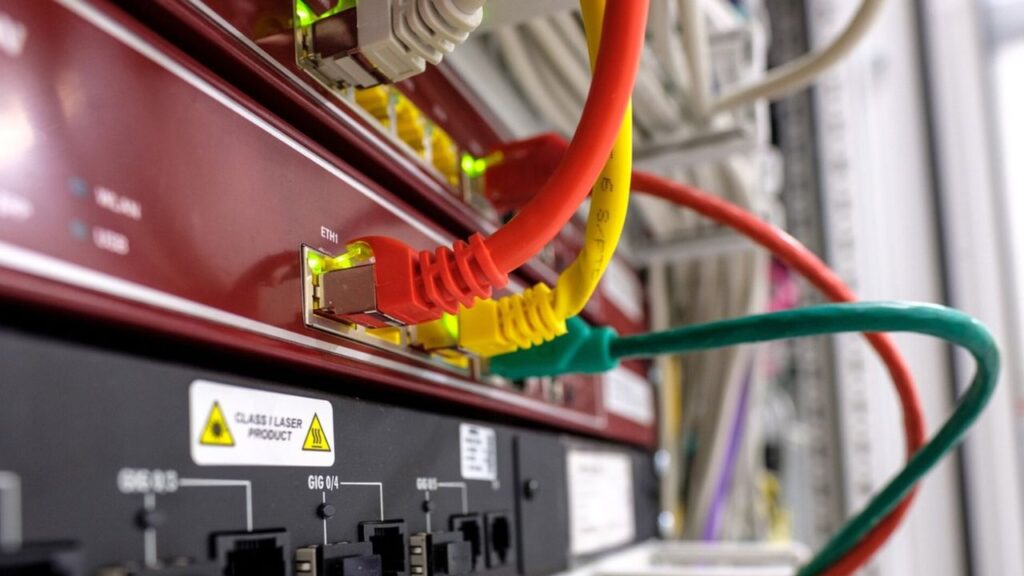In the highly linked world of today, the Internet has become an essential component of our everyday existence. But, how does cable internet work vs dsl?
Digital Subscriber Line (DSL) is one of the many technologies enabling our online experiences. It is a dependable and popular way to provide high-speed internet access.
This post will examine the inner workings of DSL technology and explain how it allows us to connect, stream, and browse without problems.
What Does DSL Mean?
A form of broadband internet connection known as DSL, or digital subscriber line, uses current phone lines to send data quickly.
DSL enables the simultaneous use of the phone line for internet access and voice communication, in contrast to traditional dial-up connections, which use the same line for both data and speech.
This is accomplished by splitting the phone connection into distinct frequency bands for voice and data transmission.
What is a Good Speed for DSL?
Is DSL Internet good? DSL broadband Internet runs through landline phone wires. Moderate-range DSL speeds of 10-25 Mbps are great if you’re looking for Internet for light use, like checking email, streaming video on one or two devices, and occasional gaming.
How Many Wires Does DSL Use?
DSL, or Digital Subscriber Line, typically uses a single copper telephone line to provide internet connectivity. This telephone line traditionally consists of two pairs of copper wires, each capable of carrying signals in both directions.
However, only one pair is generally used for DSL internet transmission, while the other pair may be used for voice communication concurrently.
So, while a standard telephone line for DSL has four wires, DSL technology effectively utilizes a subset of these wires, with one pair designated for voice and the other pair for data transmission.
This efficient use of existing infrastructure allows users to access high-speed internet services without disrupting their ability to make telephone calls on the same line.
How Does DSL Work?
Separating Voice and Data: By dividing a regular phone line’s frequency spectrum, DSL is able to perform two functions.
While the higher frequencies are utilized for data transmission, which makes it easier for users to access the Internet, the lower frequencies are set aside for speech transmissions, which allow users to make phone calls.
DSL Modems: At the user’s end, a DSL modem plays a crucial role in the connection process. This device is typically provided by the internet service provider (ISP) and serves as the bridge between the user’s devices and the telephone line. The DSL modem modulates and demodulates signals, converting digital data from computers and devices into analog signals for transmission over the telephone line and vice versa.
DSLAMs: The Digital Subscriber Line Access Multiplexer (DSLAM) is the site where the phone lines converge on the end of the service provider.
This centralized equipment sends data to the Internet, separates speech and data signals, and collects data from several DSL connections.
DSLAM is a vital component that makes it possible to supply users with high-speed Internet while making effective use of the current infrastructure.
Types of DSL: Varied DSL technologies, such as symmetric DSL (SDSL) and asymmetric DSL (ADSL), are available to meet varied user needs.
For example, home connections often utilize ADSL because it offers quicker download speeds than upload rates, which is ideal for online surfing and streaming.
Conversely, SDSL provides the same upload and download speeds, which makes it more suited for corporate applications that need reliable two-way communication.
Advantages of DSL
Widespread Availability: DSL leverages the existing telephone infrastructure, making it widely available in both urban and rural areas where other high-speed options might be limited.
Simultaneous Voice and Data: One of the key advantages of DSL is its ability to support voice calls and internet data simultaneously, without compromising on quality for either.
Cost-Effective: DSL is often more cost-effective than other high-speed options, making it an attractive choice for budget-conscious consumers.
Conclusion:
For millions of consumers worldwide, DSL continues to be a dependable and easily available technology in the constantly changing world of internet connectivity.
DSL keeps closing the digital gap by using the current phone infrastructure and implementing intelligent modulation techniques to give both urban and rural areas access to high-speed Internet.
As technology continues to advance, it will be interesting to see how DSL evolves to meet the growing demands of our interconnected world. Comment here.
Read More – >>> The Best Laptop Brands List in the World

